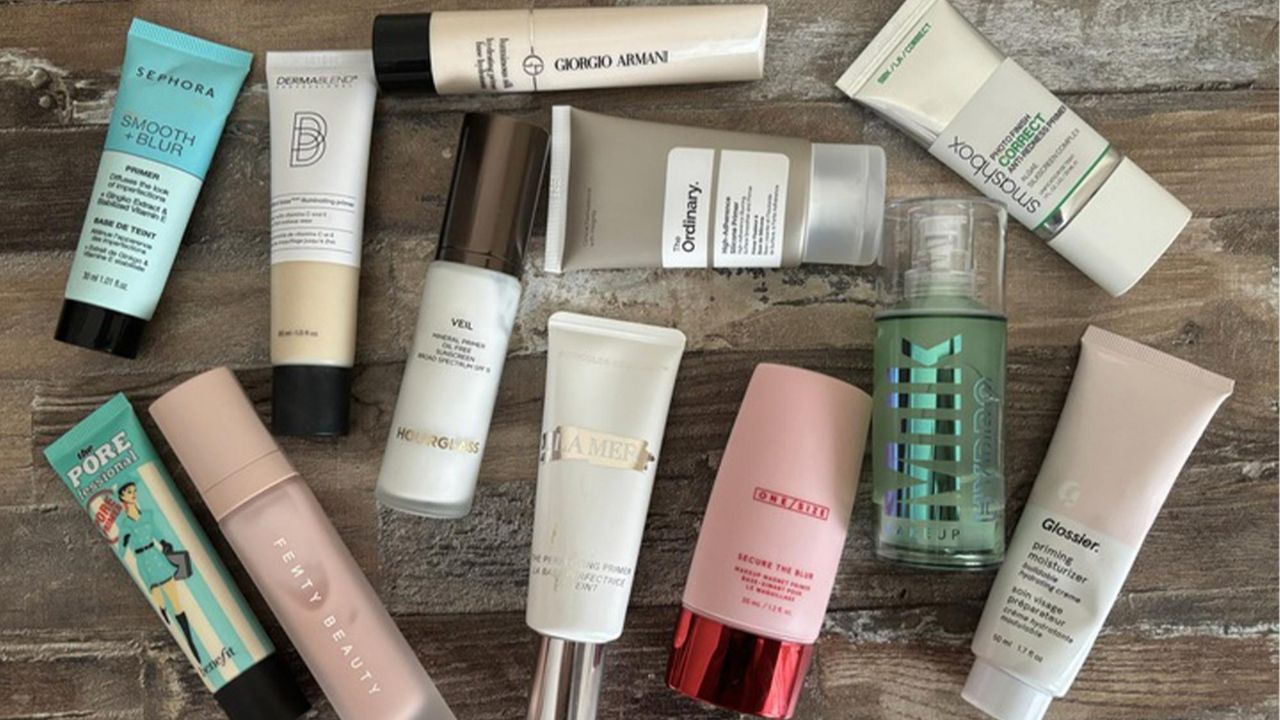Is It Worth It To Save Primers? Saving primers is worthwhile if they are stored properly to maintain their quality, but scarcity and fluctuating prices can affect their future value.
For seasoned reloaders, primers are as essential as bullets and powder. They are the component that makes it all come together, creating the small explosion needed to propel a bullet.
However, with recent market fluctuations, primers have become scarce and expensive, making many reloaders question whether it’s worth it to save them for future use.
In this article, we’ll dive into the world of primers, the reasons behind their shortage, and whether stockpiling them is a good strategy for reloaders today.
Contents
What Are Primers?
Definition and Function
Primers are one of the key components in ammunition, placed at the base of a cartridge. When struck by a firing pin, a primer ignites the powder inside the cartridge, which in turn expels the bullet from the gun’s barrel.
Reloaders are familiar with the importance of primers, as they are required to reload spent cartridges and produce new ammunition. [Is It Worth It To Save Primers?]
Without primers, there’s no way to fire a cartridge. For this reason, the availability of primers is critical to anyone who regularly reloads ammunition, especially competitive shooters and hunters who need a steady supply of ammunition.
Types of Primers
Primers come in several types, each designed for specific kinds of ammunition. The two main categories are rifle and pistol primers, each of which has small and large variants:
- Small Rifle Primers: These are used in smaller calibers like .223 Remington or .22-250.
- Large Rifle Primers: These are used in larger calibers like .30-06 or .300 Win Mag.
- Small Pistol Primers: Ideal for smaller handgun calibers like 9mm or .380 ACP.
- Large Pistol Primers: Suitable for larger handgun calibers like .45 ACP or .44 Magnum.
Each primer type has a specific purpose and is not interchangeable. This means that having a stockpile of the right type of primers is crucial if you want to ensure you can continue reloading without interruptions.
Why Are Primers in Short Supply?
Demand Surge
In the past few years, primers have become increasingly difficult to find due to a dramatic surge in demand. [Is It Worth It To Save Primers?]
Much of this increased demand stems from growing concerns about potential legislative changes, which has led many people to start reloading as a way to ensure they can continue to shoot regardless of future restrictions.
Moreover, the increase in firearm ownership has put additional pressure on the supply chain. Many new gun owners are also purchasing primers, either to learn reloading or simply to ensure they can keep shooting even if factory ammunition becomes scarce.
Manufacturing and Supply Chain Issues
The supply of primers has been further hampered by widespread disruptions in global supply chains. The COVID-19 pandemic had a significant impact on manufacturing and transportation, leading to delays and reduced output from factories.
These disruptions have persisted even as the pandemic has waned, as factories and suppliers work to catch up with the backlog of orders.
On top of that, the materials used to manufacture primers—such as certain chemicals and metals—have also been in short supply. This has slowed down production even further, exacerbating the already tight market conditions for primers.
Political and Regulatory Concerns
In the U.S., concerns about stricter gun control laws have also contributed to the primer shortage. Even the possibility of new regulations on ammunition sales has caused a wave of panic buying.
Many reloaders and shooters have started hoarding primers in anticipation of future restrictions, further straining the supply.
While no major legislative changes have occurred yet, the uncertainty surrounding the issue has been enough to drive demand through the roof.
This panic buying has made it even harder for reloaders to find primers, especially at reasonable prices. [Is It Worth It To Save Primers?]

Is It Worth It to Save Primers?
Storage and Shelf Life
One of the most important factors to consider when deciding whether to save primers is their shelf life. Fortunately, primers have an exceptionally long shelf life when stored correctly.
If they are kept in a cool, dry environment away from moisture, heat, or direct sunlight, they can last for decades without any noticeable degradation in performance.
For reloaders with the space to store primers properly, saving them can be a smart move. Since they don’t spoil like some other components of ammunition, you won’t have to worry about them going bad over time. This makes primers an ideal item to stockpile for future use.
Scarcity and Future Supply
Another key reason to save primers is the uncertainty surrounding their future availability. While there’s no way to predict exactly how long the current shortage will last, it’s clear that primers will remain difficult to find for the foreseeable future.
The combination of increased demand, supply chain issues, and political uncertainty makes it unlikely that primer supplies will stabilize anytime soon.
If you’re concerned about running out of primers, saving them now can help ensure you have enough on hand to continue reloading during periods of scarcity.
Stockpiling primers during times of abundance can give you peace of mind and prevent you from having to pay inflated prices when supplies are tight.
Financial Considerations
The financial aspect of saving primers is also worth considering. Prices for primers have risen dramatically due to the shortage, and there’s no guarantee they’ll go back down anytime soon.
If you’re able to find primers at a reasonable price now, it may be wise to buy extra and save them for later. [Is It Worth It To Save Primers?]
However, it’s also important to be mindful of how much money you’re tying up in primers. While having a stockpile can save you money in the long run, it’s possible that prices will eventually stabilize or even decrease.
If that happens, you may end up spending more money on primers than necessary. [Is It Worth It To Save Primers?]
Pros of Saving Primers
Long Shelf Life
Primers are one of the few reloading components that don’t degrade over time if stored properly. This makes them an excellent item to save for future use, especially if you’re concerned about future shortages.
With their long shelf life, you can rest assured that primers stored today will still be usable years down the line. [Is It Worth It To Save Primers?]
Preparedness for Supply Shortages
One of the biggest advantages of saving primers is being prepared for future shortages. With the current state of the market, it’s difficult to predict when primers will become more readily available. By saving primers now, you can ensure that you won’t be caught off guard during the next shortage.
This can be especially important for competitive shooters or those who reload for hunting, where having a steady supply of ammunition is crucial. [Is It Worth It To Save Primers?]
Potential Value Increase
Primers have become a valuable commodity due to their scarcity. If the current trend of rising prices continues, primers could become even more expensive in the future.
By saving them now, you’re effectively securing an item that may increase in value over time. This could make saving primers a smart financial investment, especially if you plan on reloading for many years to come.
Cons of Saving Primers
Storage Risks
While primers have a long shelf life, they must be stored correctly to avoid degradation. Improper storage—such as exposing them to moisture, heat, or extreme cold—can cause primers to lose their effectiveness.
In some cases, degraded primers may not ignite at all, making them unusable. Additionally, improper storage of primers can pose a safety risk, as they are a sensitive and potentially hazardous component of ammunition.
Tying Up Resources
One downside of saving primers is that it requires a financial investment upfront. Depending on how many primers you’re saving, you could end up spending a significant amount of money on a stockpile that may not be necessary in the long term.
If the primer market stabilizes and prices drop, you may find that you overpaid for primers that you could have purchased at a lower price later on. [Is It Worth It To Save Primers?]
Market Stabilization
It’s also possible that the primer market will stabilize in the future, making stockpiling unnecessary. If manufacturers are able to ramp up production and meet demand, primers could become more readily available at reasonable prices. In this scenario, saving primers now might not provide as much value as anticipated.
Final Verdict
In conclusion, saving primers can be a smart move for many reloaders, particularly those who are concerned about future shortages or price increases.
Primers have a long shelf life and can be stored for decades without losing their effectiveness, making them an ideal item to stockpile.
Additionally, saving primers ensures that you’ll be prepared for any future supply disruptions, which seem likely given the current state of the market.
However, saving primers isn’t without its risks. Improper storage can degrade the quality of primers, and tying up resources in a stockpile may not be the best financial decision for everyone. Additionally, if the primer market stabilizes in the future, the value of saving primers may decrease.
Overall, saving primers is worth it for those who reload frequently and are concerned about future supply issues. [Is It Worth It To Save Primers?]
If you have the space to store them properly and the financial flexibility to invest in a stockpile, saving primers can give you peace of mind and ensure you have the components you need to continue reloading, even during times of scarcity.
See Also: Is It Worth Doing Lost Sectors On Master?
FAQs
How long can primers be stored?
Primers can last for decades if stored in a cool, dry environment. [Is It Worth It To Save Primers?]
Can primers go bad if stored improperly?
Yes, improper storage can cause primers to degrade and become unusable.
Are primers expected to become more available in the future?
While the supply chain remains strained, increased production may eventually lead to more availability.
Is there a difference in shelf life between small and large primers?
No, both small and large primers have similar shelf lives if stored correctly.
What is the safest way to store primers?
Store primers in a cool, dry place away from heat sources, moisture, and direct sunlight.
Conclusion: Is It Worth It To Save Primers?
Saving primers can be a worthwhile strategy for those who reload frequently and want to prepare for future shortages.
With their long shelf life and rising value, primers are a good item to stockpile—provided they’re stored properly. [Is It Worth It To Save Primers?]
However, tying up resources in a stockpile may not be necessary for everyone, especially if the primer market stabilizes in the near future.
Ultimately, the decision to save primers comes down to individual needs, reloading habits, and storage capacity.

Hello, I am Henrik Garrison from El Dorado, California. I love gaming and exploring new features. When I couldn’t find clear advice online about buying certain game features, I decided to start a blog to help people decide whether to buy games, products, or services.

